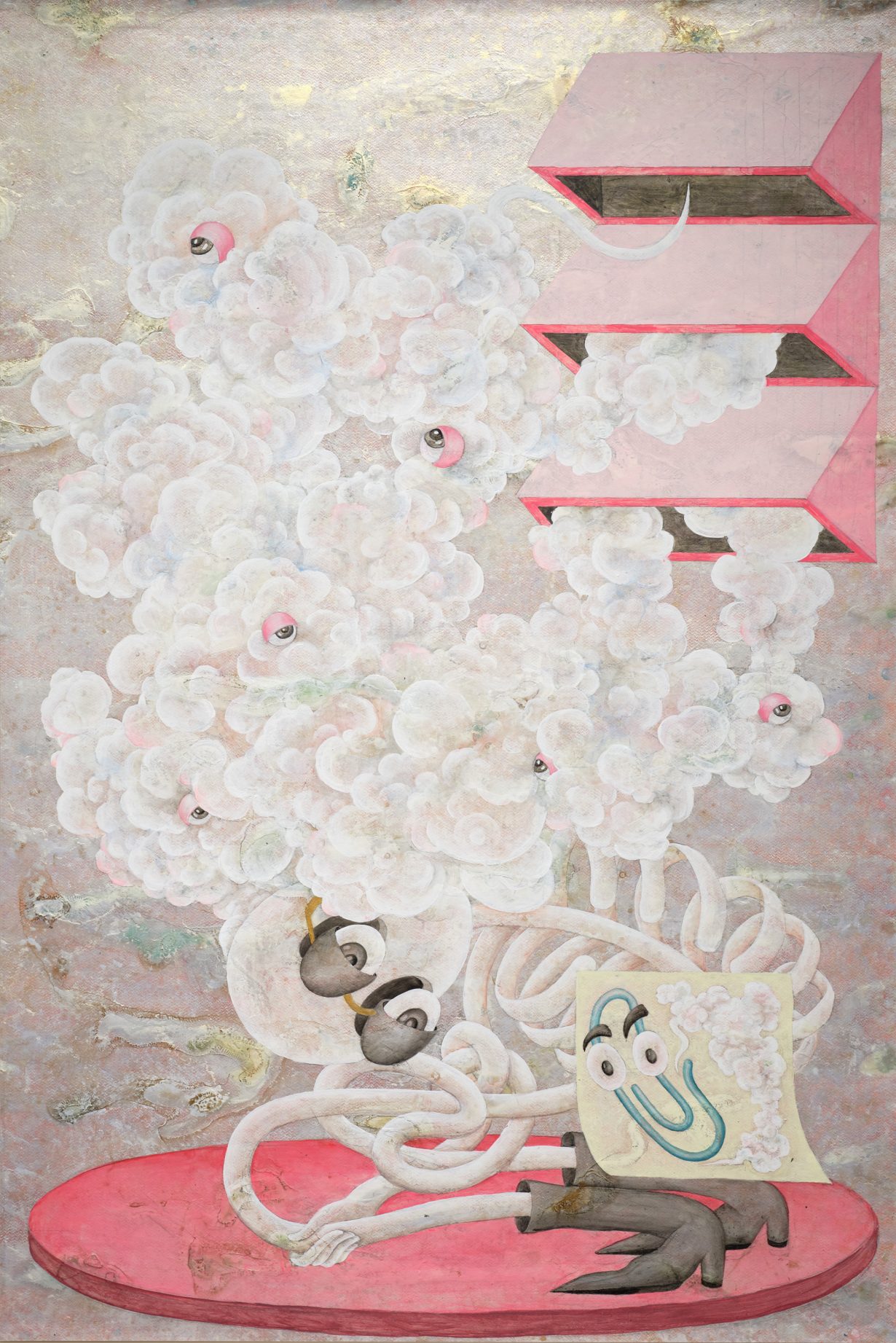From working as an AI trainer to reanimating Microsoft’s Clippy, Liu exposes the robotic and human labour behind the capitalist system on which the world runs
Constructed in 1770 for the Austrian royal court, the Mechanical Turk was presented as an automaton that could play chess. But this machine,
it turned out, was merely a box that concealed a person who moved pieces from underneath the board, creating the illusion of an appliance that could think and act independently.
This notion of a fabricated reality forms the crux of Jen Liu’s first solo show in Hong Kong. Through a series of paintings, sculptures and videos, the artist alludes to those employed by Amazon Mechanical Turk (MTurk) as the invisible, exploited labour force that labels data used to train AI models. These workers receive minimal compensation, sometimes below minimum wage, for annotating images using bounding boxes, which define the location and size of an object within a 2D or 3D space. Curious to put herself in their shoes, Liu signed up to be an ‘AI trainer’ on clickworker.com. She carried out the role for 30 hours, barely earning $15.
This experience informs the work presented here. I Am Cloud (2024), a new videowork that gives the show its title, focuses on three figures – an Amazon MTurk worker, a microscopic Xenobot (a synthetic lifeform made from African frog stem cells and built by computers) and a nineteenth-century Chinese migrant sex worker living in the US – connected through their unseen role in society and, in the video, through their physical compression into increasingly small spaces. In one striking scene, a young girl is seen working inside a small, boxlike pod, when suddenly, a phallic, wormlike limb enters the space. With her body contorted to adjust to the pod’s interior and the intrusive presence, she types on a keyboard mounted on one wall. Her existence is barely acknowledged by the worm limb, which is there, presumably, only to check that she continues to work.
Liu makes further reference to invisible labour via a sculpture consisting of two white, cubic boxes: Describe a Product Based on an Image: A Versatile Soft Body Living Machine with Practical Applications Hidden Inside an Algorithmic Fantasy / Describe a Product Based on an Image: A Hyper Ecstasy that Celebrates Speed While Being Haunted by the Anxiety of Not Being There (2024). Seemingly normal bubbles are emitted from one of the units, but are in fact incorporated with pulverised MTurk documents that once contained information about data-entry tasks (a detail only gleaned from the exhibition text). The other unit includes a pair of animatronic eyes and emits robotic sounds derived from an audio chip extracted from a sex doll. Boxes are a central theme within the exhibition, both visually and conceptually – whether boundary boxes that data labellers place on images, Amazon’s shipping boxes or those that frame the artist’s acrylic paintings.

It’s in her paintings on paper that Liu makes the invisible visible (that is, the robotic and human labour behind the capitalist system on which the world runs), illuminating the interconnectivity between seemingly disparate entities. Packed with motifs and references, Liu’s images are replete with symbolic imagery such as skeletons bearing the weight of cloudlike formations; one of the first AI assistants, Microsoft’s Clippy (an animated paper clip that was universally derided for intrusively popping up onscreen with advice for users), makes repeated appearances such as in If the Clouds are Thick, Many Things May be Hiding Within (2024), through which Liu probes technology’s adeptness, competence and eventual obsolescence; and anthropomorphised industrial structures donning wigs, high heels and thongs intertwine with wires and plugs in What a Street-Walking Broad: All Dolled Up Like a Charming Young Lass (2024).
The eye-catching, glimmering sheen in these paintings is made from pulverised e-waste – defunct digital devices that have been discarded and crushed, and seemingly applied here as references to both the physical machines that are the facades of new technology and a social-media culture that masks reality. Peer behind the veil, and you’ll find a vast workforce of humans toiling to create the gleaming interface of contemporary digital platforms.
Liu positions herself much like the man inside the Mechanical Turk, but unlike him she focuses on revealing the mechanics rather than concealing them, shaping the revelations and connections that prompt us to rethink the way we comprehend the virtualisation and mechanics of labour systems – and those working within them.
I Am Cloud at Blindspot Gallery, Hong Kong, 17 September – 2 November
